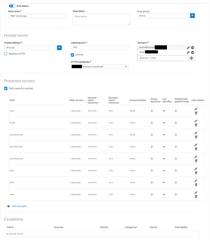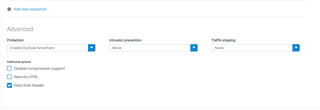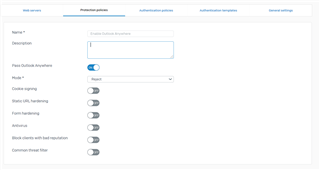Hi,
I'm trying to publish Exchange 2016 EWS, Autodiscover and OWA through WAF in XG v18 (SFOS 18.0.1 MR-1-Build396) and it doesn't work. Everytime I access one of the published paths through WAF I get HTTP 401 error messages in the WAF log:
I have configured the following WAF rule:
I already turned off all protection mechanisms as you can see. When I try to access the paths in a web browser, I get an authentication prompt. When I enter my credentials, the prompt comes up again and the WAF logs the 401 errors.
It works fine if I access the Exchange 2016 OWA, EWS and Autodiscover paths internally and if they are published over Microsoft TMG 2010 (configured without pre authentication too).
Any ideas?
Thanks
Michael
This thread was automatically locked due to age.







